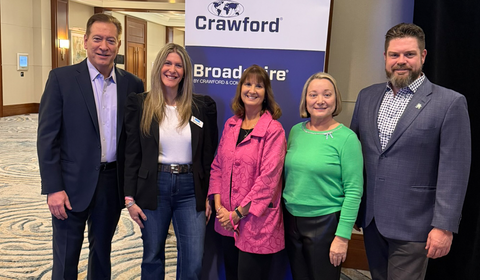Capacity isn’t just a buzzword—it’s become a defining challenge across the insurance industry. With claims growing in both volume and complexity, and a persistent talent shortage affecting everything from underwriting to adjusting, resource constraints are no longer an occasional disruption—they’re a constant pressure point.
Across Canada, we’ve seen it play out in real time: after major weather events, during wildfire season or even in the quiet months when claim intake still outpaces internal capacity. Teams are stretched thin and the ability to scale quickly—without compromising service—has become critical. Canada’s P&C industry is already facing a projected workforce shortfall in the tens of thousands over the next decade. Pair that with an aging workforce and more retirements on the horizon and it’s clear that relying on internal staff alone is no longer a sustainable model for peak demand. That’s why we created Workforce Advantage.
Workforce Advantage is not about filling temporary gaps. It’s a rethinking of how workforce management can better align with operational realities. It’s a flexible, strategic solution that gives clients access to experienced professionals—adjusters, examiners, inspectors, call centre agents—who are fully trained, quality assured and ready to integrate with internal teams. Moreover, Workforce Advantage allows carriers to have temporary staff report directly into them while using their systems and protocols, ensuring seamless integration and adherence to established procedures. From my perspective, it’s not just about adding people. It’s about delivering capability. Whether during CAT events or a surge in everyday property losses, clients need support that understands compliance requirements, customer experience expectations and the technical nuances of different claim types. That requires more than a resume—it requires alignment to standards, processes and outcomes.
Take Alberta’s hailstorm season, for example. Multiple carriers faced significant backlogs within days. Those who had a flexible model in place—who could activate an external network without slowing down—were the ones who maintained service levels and kept cycle times in check.
One of our notable success stories involves a client who faced a significant backlog of claims. The department was overwhelmed, making it impossible to avoid further delays. Recognizing the need for expansion, the client integrated temporary adjusters through Workforce Advantage. This strategic addition allowed them to manage the growing workload efficiently while maintaining high standards of service and operational efficiency. Moreover, Workforce Advantage's flexibility enabled both the carrier and the temporary staff to engage in a trial period, ensuring the partnership was mutually beneficial. This is what Workforce Advantage is built for: continuity in chaos, agility in growth and peace of mind in times of pressure. It's a model that moves clients from reactive firefighting to proactive readiness—so they’re not just coping with demand, they’re staying ahead of it.



